Noticing a warning light during driving a vehicle can be scary especially if you don’t know the reason. While you can continue driving with a few warning lights, some lights ask you to stop the vehicle immediately.
So it’s crucial to understand the car’s warning light to maintain the car’s condition and drive safely. The car’s dashboard shows various shapes and color warning lights that indicate certain issues and information. Let’s check them!
Article Summary
- What is The Dashboard Of A Car?
- The Color Code Of A Dashboard
- Types Of Car Warning Lights On Dashboard
- Advanced Car Warning Systems Of Modern Vehicle
- What To Do When A Warning Light Comes On Car Dashboard?
- When Should You Decide To Sell Your Car?
- Preventative Measures And Regular Maintenance
- How To Troubleshoot Common Car Warning Lights Issues?
- FAQs
What is The Dashboard Of A Car?
The dashboard is the communication center of a vehicle. The symbols, warning lights, and icons of the dashboard provide information about the vehicle’s condition and warn about the underlying issue. If you want to drive the car efficiently and fix any issue before it becomes worse, you should understand each light and icon of the dashboard.
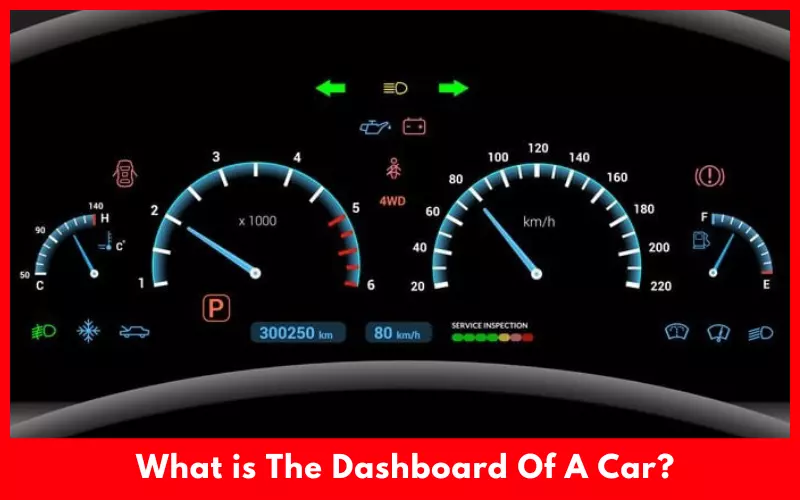
The Color Code Of A Dashboard
The car’s dashboard shows red, yellow, and green warning lights based on the severity of the problem. For example, if the dashboard detects an urgent issue, it shows a red warning light.
A yellow or orange warning light indicates the issue that you can solve after a while. Similarly, green or blue lights are informational and come out when the system functions properly.
Types Of Car Warning Lights On Dashboard
The symbol or icon of a car’s dashboard indicates various issues or information. For example, a battery symbol indicates an issue with the car’s electrical system, while an oil symbol signifies low oil pressure.
1. Red Warning Lights
Red warning lights are the most critical. If the car shows a red warning light, you should stop driving the car immediately.
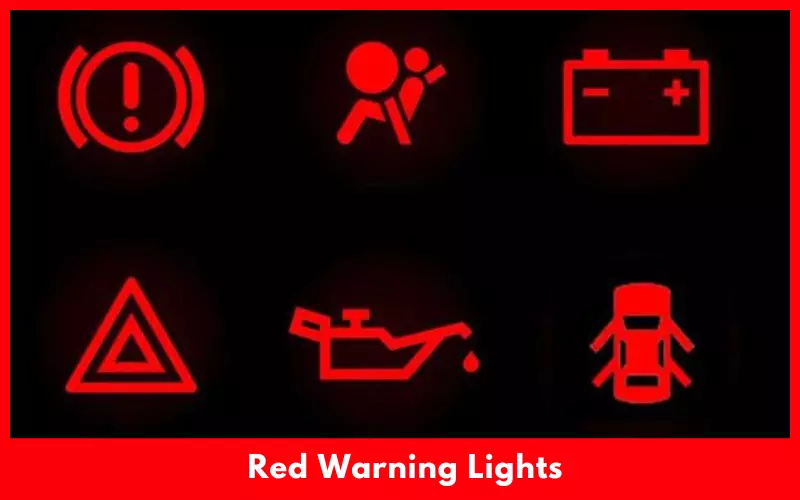
- Engine temperature warning light: This warning light looks like a thermometer submerged in liquid and turns on when the engine gets overheated. If the dashboard activates this light, stop the car and turn off the engine to avoid further damage.
- Oil pressure warning light: This light turns on when the oil pressure drops down. It also requires immediate attention.
- Brake system warning light: The brake system warning light is displayed inside a circle with parentheses. It indicates serious brake system issues like low brake fluid or a problem with the anti-lock braking system (ABS).
- Battery charge warning light: This warning light indicates various charging problems such as a failing battery, a damaged alternator, or a faulty electrical connection.
- Airbag system warning light: If your car’s dashboard detects any problem with the airbag system, activate the airbag system warning light. If you ignore this light, the airbag won’t deploy in a crash.
2. Yellow And Orange Warning Lights
These lights don’t indicate immediate danger. However, you should address the issue that activates the yellow and orange lights to avoid further damage.
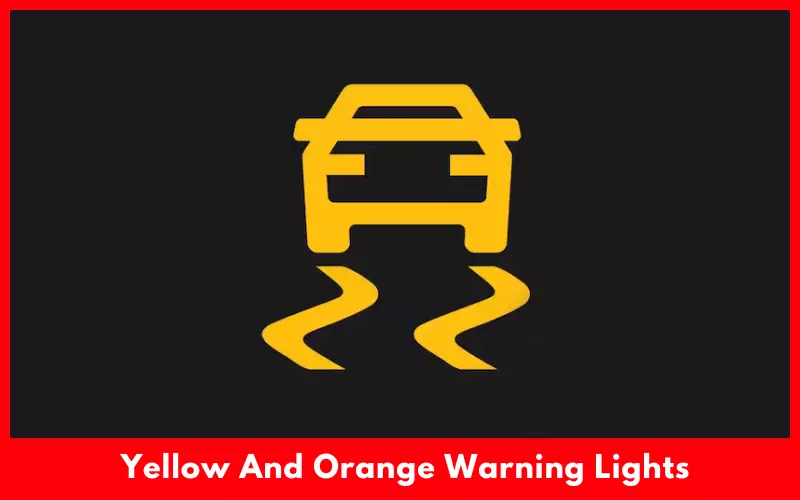
3. Check Engine Light
It’s the most well-known warning light and can activated for various reasons including a loose gas cap and misfiring engine. If you notice the check engine light is on, diagnose the car to pinpoint the problem.

4. Tire Pressure Warning
This light indicates one or more of your tires are significantly underinflated. If so, you can struggle to handle the car, and avoiding the light can cause increased wear.
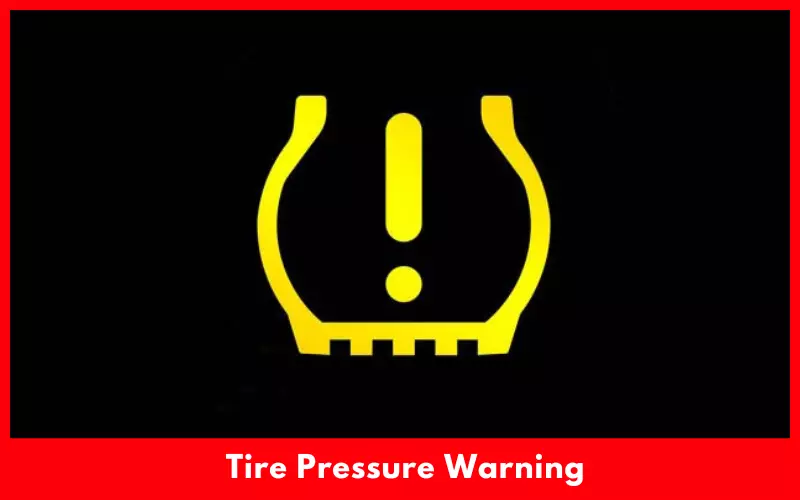
5. Service Vehicle Soon
This light suggests that your vehicle needs a scheduled service or a non-critical system needs attention.
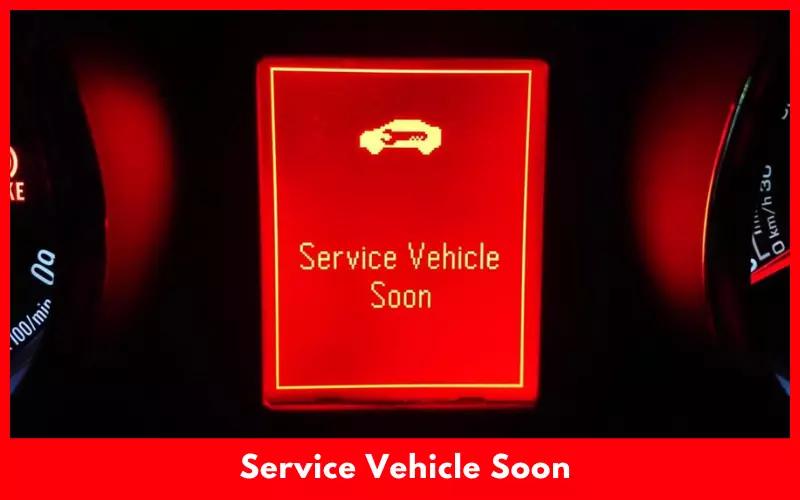
6. Transmission Temperature
If your car’s transmission has faults and generate high temperature than normal, this warning light can turn on. It suggests that you should cool down the transmission and check the fluid levels.
7. Exhaust Fluid Warning
This light indicates that the diesel exhaust fluid level is low. It suggests reducing emissions in diesel vehicles.
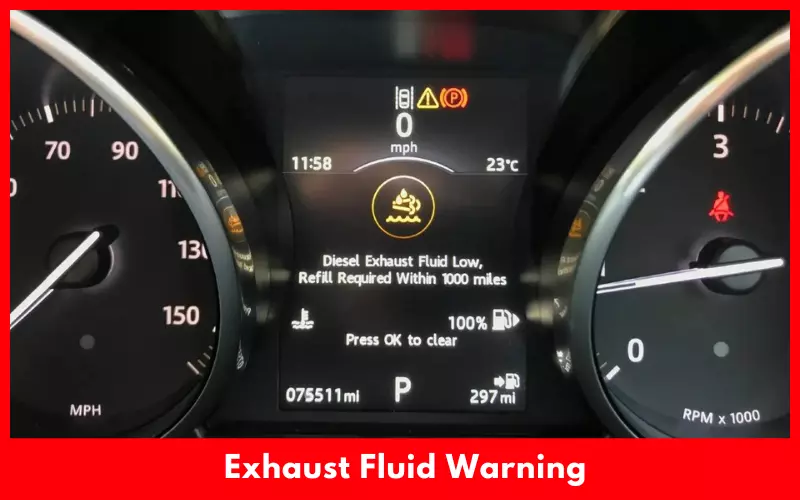
8. Green And Blue Indicator Lights
Though green or blue light doesn’t indicate any serious issue, it informs that certain systems are engaged. Some green or blue indicator lights are:
9. Turn Signals
The green arrows that flash on the dashboard are turn signals. These indicate the direction you have signaled to turn.

10. Headlight Indicator
This light indicates that the car’s headlights are on. It’s usually a green or blue symbol that looks like a headlamp.

11. Cruise Control Indicator
An activated cruise control system triggers this informational light. It’s a gauge icon that has an arrow pointing to a speed. In some vehicles, there can also be the word” CRUISE”.
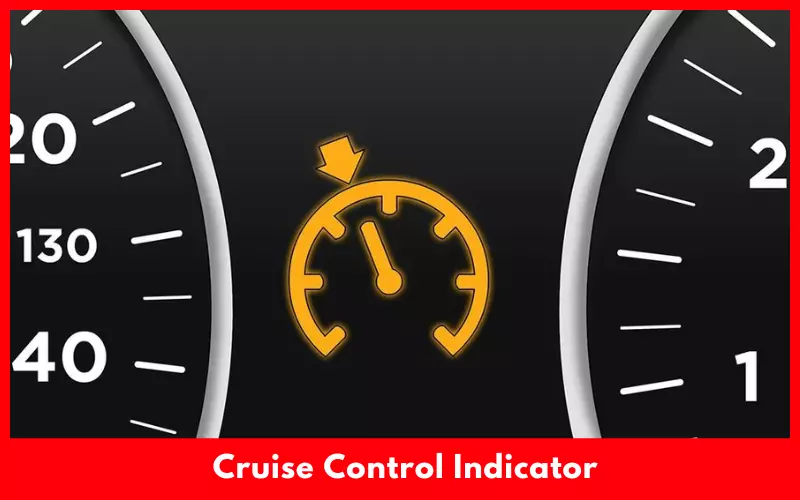
Advanced Car Warning Systems Of Modern Vehicle
Some newer vehicle comes with advanced systems to provide safety warnings and some of them are:
Lane Departure Warning
When a driver tries to drift out of the lane without signaling, this system turns on to make the driver alert. It helps prevent accidents caused by inattention or drowsiness.
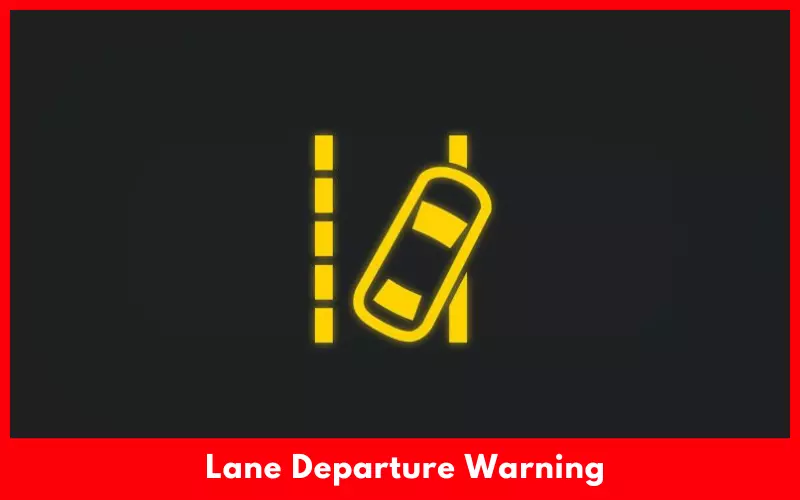
Forward Collision Alert
This system warns of an impending collision with a vehicle or object in the same path. This might provide you some time to react and avoid potential accidents.
Blind Spot Monitoring
If the car detects a vehicle in your blind spot when changing lanes, it activates this light to enhance the safety of the lane.
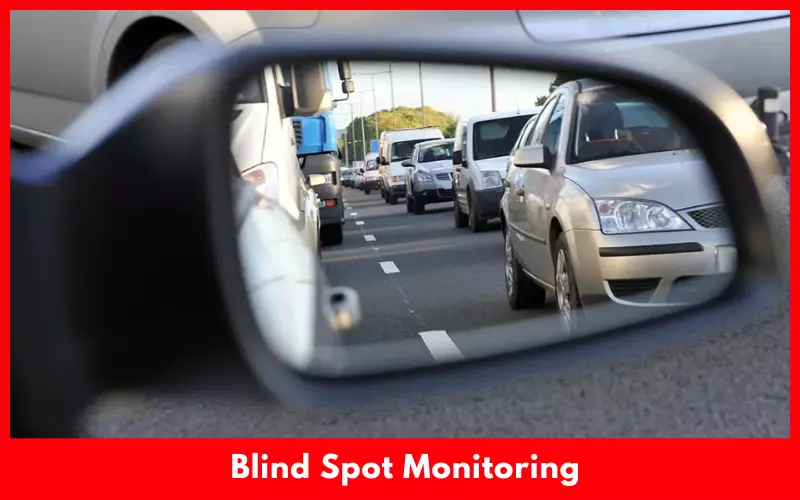
What To Do When A Warning Light Comes On Car Dashboard?
If you want to prevent damaging the vehicle and drive safely, you should react properly based on certain warning lights. For example, if you notice a red light on the car’s dashboard, pull over the vehicle immediately and shut it down.
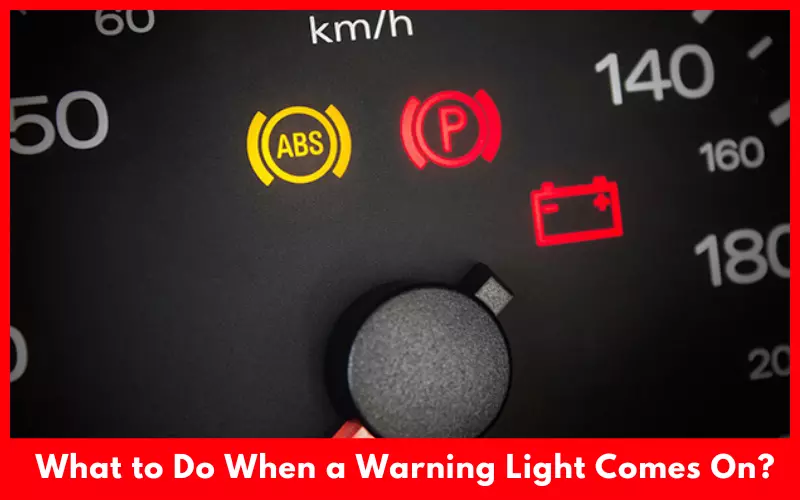
But if you notice yellow lights, schedule a service appointment. Unlike the red light, you can keep driving with a yellow light. In the meantime, monitor your car’s performance for any changes.
Some newer models also have maintenance reminder lights to remind you of regular service intervals after a certain mileage and time.
When Should You Decide To Sell Your Car?
Sometimes, addressing the warning lights and maintaining the vehicle isn’t worth it due to the repair cost. If you face expensive fixes, it can be more economical to sell the car instead of repairing it.
In this case, you can contact Alpha Cash for Cars to enjoy hassle hassle-free process to sell the vehicle and get a more reliable car avoiding the stress of private sale negotiations or costly trade-ins.
Preventative Measures And Regular Maintenance
Check your vehicle’s fluids, tire pressure, and electrical systems regularly to determine the issues before they become serious. You should also service your car periodically to prevent issues that can trigger warning lights. So regularly check the oil level, brake system, and tire rotations.
You can also use an OBD-II scanner to read the error codes that trigger the warning light. This can help the mechanic fix the issue quickly.
How To Troubleshoot Common Car Warning Lights Issues?
It can be tiresome to troubleshoot the warning light issue as you may need to inspect plenty of components. You should hire an expert mechanic to solve severe issues to deactivate the warning light.
However, you can easily solve minor problems like a loose gas cap or a temporary sensor malfunction. You can also resolve the warning light by topping off fluids or changing a bulb.
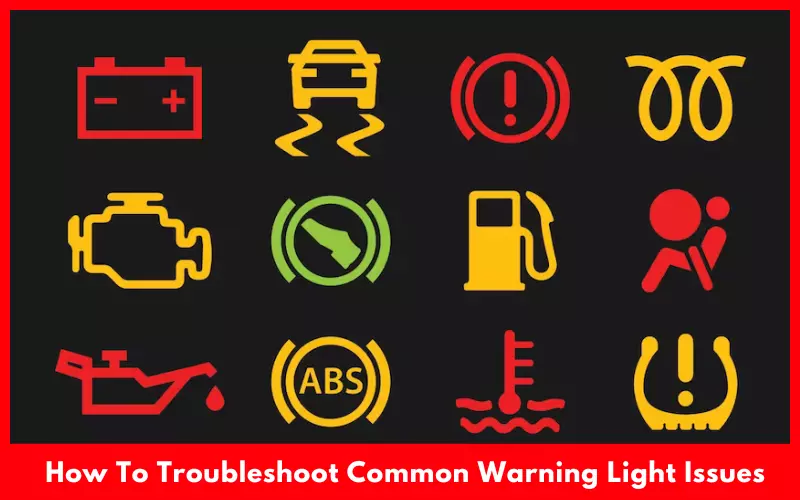
FAQs
What Should You Do If The Check Engine Light Turns On While Driving?
You should inspect the check engine light first. If the check engine light is not flashing, you can keep driving. But if the light is flashing, stop driving the car and call an expert mechanic.
Why Did My ABS Warning Light Come On?
The ABS warning light can come on due to the faulty anti-lock braking system. If the ABS light turns on, stop driving the car. Otherwise, it can cause skidding as the ABS might not function in an emergency stop.
Is it Safe To Drive With The Airbag System Warning Light On?
It isn’t safe to drive with the airbag system warning light on. The faulty airbags might not work in an emergency and increase the severity of the accident. Check the airbag system and fix the problem before starting the drive.
Can You Drive The Car With The Oil Pressure Light?
No, you shouldn’t drive with oil pressure warning light on as it can cause severe damage to the engine. Instead, stop the vehicle, and turn off the engine.
Final Words
You should have now a clear idea about the car’s warning lights, icons, and symbols. Check the car’s owner’s manual to better understand the vehicle’s dashboard. This way you can decide whether you can keep driving or stop the vehicle immediately after noticing a certain symbol or icon.


I love your book traffic, however, you don’t seem to count for the flood of foreign born drivers in your analysis analysis, which I find very very good